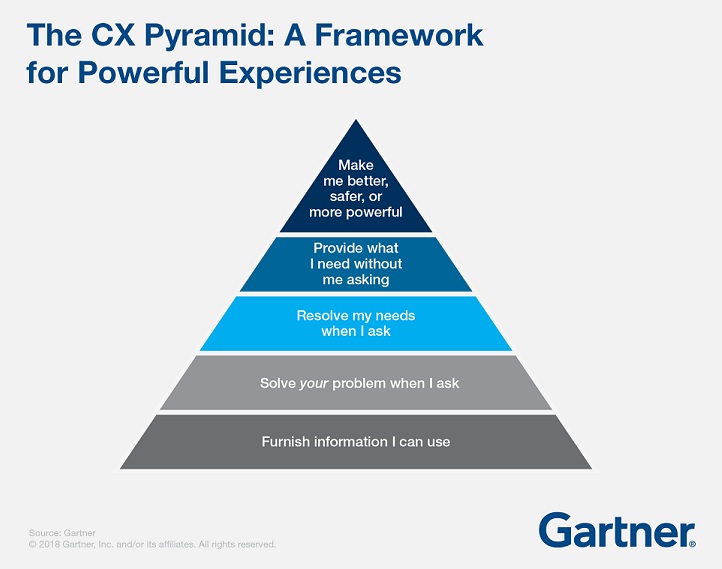According to Gartner, 81 percent of customer experience (CX) leaders report they will compete mostly or entirely on CX, but less than half have established the rationale for why CX drives business outcomes.
The goal of CX is to meet and exceed customer expectations, but while 48 percent say their CX efforts exceed management’s expectations, just 22 percent of customer experience leaders report their CX efforts exceed customers’ expectations.
To address this challenge, Gartner unveiled the CX Pyramid, a new methodology to test organizations’ customer journeys and forge more powerful experiences that deliver greater customer loyalty and brand advocacy.
"The fact that so many organizations understand the importance of CX to the brand, but are unable to deliver outcomes that meet or exceed customer expectations is indicative of the growing need for fresh approaches to delivering more positive outcomes for customers," said Augie Ray, Research Director at Gartner. "Leading brands in CX start with a strong foundation in customer satisfaction. Getting this right and understanding how to build upon it to drive positive financial and business outcomes is what sets the best brands apart from the rest."
The Gartner CX Pyramid is a framework to understand what separates the most powerful customer experiences from the rest. Each level, from bottom to top, defines an incrementally stronger way to forge relationships between an organization’s brand and their customers based on the way CX leaders listen for, understand, act on and solve customer needs.
The pyramid helps to identify the most powerful CX based on criteria including: (a) how the experiences are triggered, (b) the amount of effort required of the customer, (c) the completeness of the solution, and (d) the emotion and change in perception created by the experience. The CX pyramid goes beyond just solving today’s problems for today’s customers, by focusing on five key stages:
Stage 1: Communication Level – Furnish customers with the information they can use via the right channel at the right time.
Stage 2: Responsive Level – Solve the customer’s problem quickly and efficiently – meaning, balance both business and customer goals, measures and strategies.
Stage 3: Commitment Level – Listen for, understand and resolve customers’ unique needs.
Stage 4: Proactive Level – Provide experiences that resolve needs before customers ask.
Stage 5: Evolution Level – Make customers feel better, safer or more powerful.

Through these various levels, the CX pyramid should serve as a filter to review customer touchpoints and experiences throughout the entire buy, own and advocate journey.
CX leaders looking to drive more powerful, proactive and innovative solutions through the CX pyramid should follow three key steps:
■ Assess Your Capabilities – Ensure they're capuring a thorough understanding of customer wants, needs, and expectations, not just their perceptions of your existing initiative.
■ Tailor Your Customer Journey Maps – Push experiences in the top of the CX pyramid at key touchpoints and drive customers deeper into the buy, own and advocate journey.
■ Measure Your More Innovative CX Efforts Differently – CX leaders must make sure to measure their more innovative customer experiences against adoption, perception and financial objectives.
